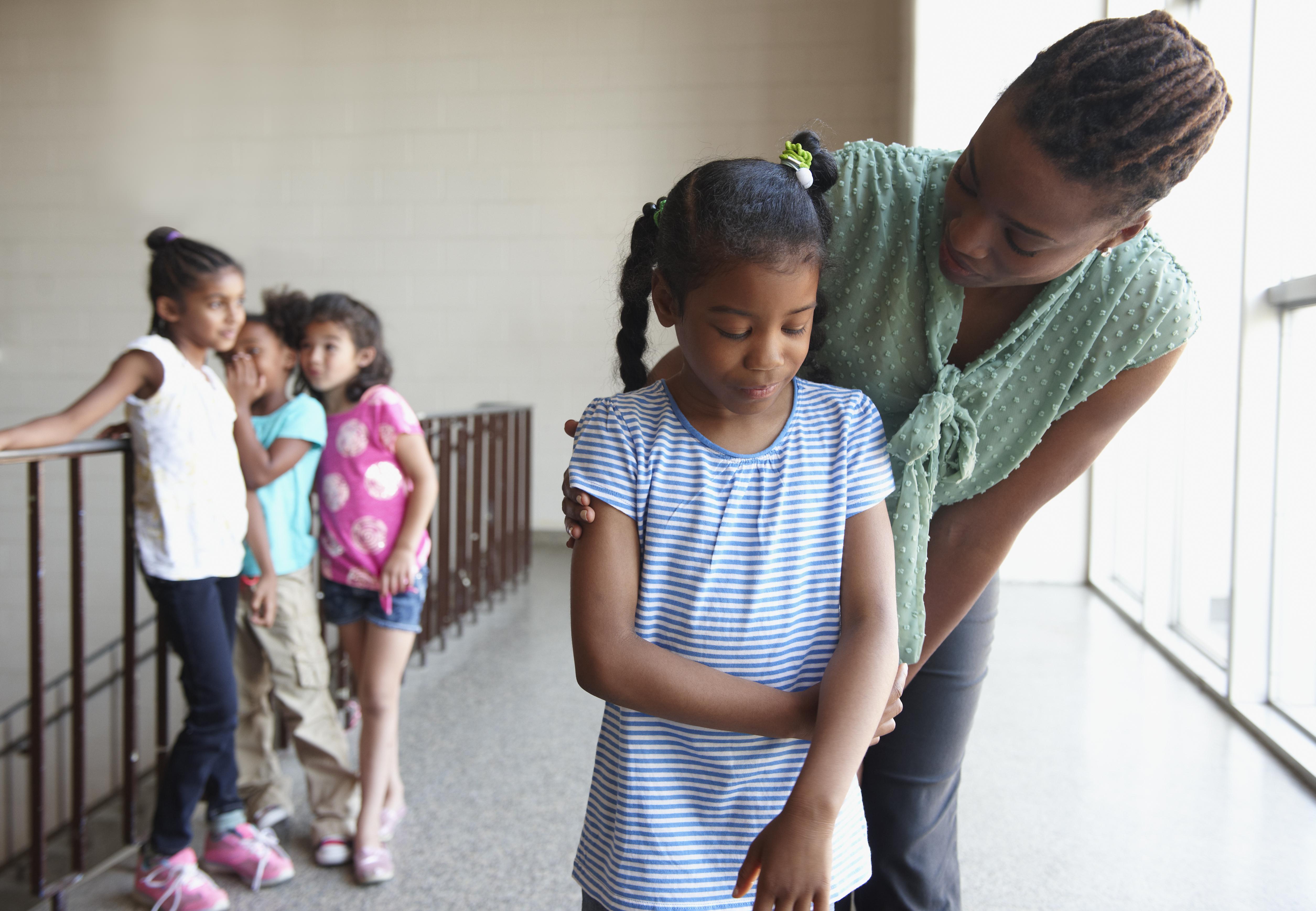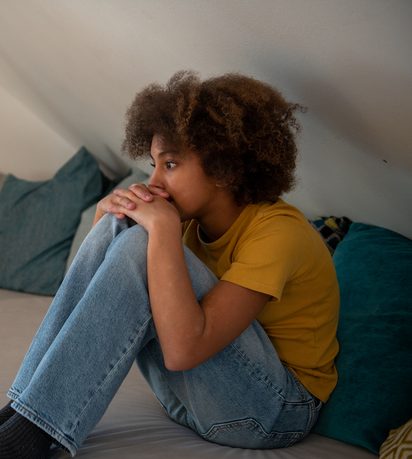It’s National Stop Bullying Day: A Call To Action For Kindness And Support

Every year, National Stop Bullying Day serves as a powerful reminder about the importance of fostering a safe and inclusive environment for everyone. Observed on the second Wednesday of October, this day encourages individuals, schools, and communities to unite against bullying and promote kindness, empathy, and respect. If you’re not already engaged in anti-bullying efforts, use today as a launchpad for the rest of the month…or for as long as it takes to help all of our children feel safe and be treated with dignity
Bullying is a pervasive issue that affects people of all ages, but it is particularly harmful to children and adolescents. It can take many forms—verbal, physical, emotional, and even cyberbullying. The consequences can be severe, leading to long-lasting emotional and psychological effects.
Although some studies show declines bullying generally, there is still significant work to be done. In fact, bullying declined recently likely because students were home during the pandemic. By 2023, they’d upticked again, and as was the case before, none were targeted more than Black children, who, by far, are targeted most–and Black girls most of all. This is especially true for Black children who by far, are the most bullied in school settings–and beyond.
The most common forms of bullying reported by students included being the subject of rumors (13 percent) and being made fun of, called names, or insulted (12 percent). Other types of bullying, such as physical aggression (pushed, shoved, tripped, or spat on) were reported by 5 percent of students, while 4 percent experienced deliberate exclusion from activities. And for this generation, bullying is compounded: social media means that bullying is no longer something that can be left behind at the end of every school day.
Western research on anti-bullying
For more than 35 years, the late Dr. Dan Olweus, a research professor of psychology at the University of Bergen in Norway and affiliated with the Research Center for Health Promotion (HEMIL), was at the forefront of Western research and intervention in the area of bullying among schoolchildren and youth. In 1970, he launched a groundbreaking project that remains widely recognized as the first scientific study of bullying, with findings published in Scandinavia in 1973 and later in the United States in 1978 under the title Aggression in the Schools: Bullies and Whipping Boys.
In the 1980s, Dr. Olweus initiated what Western scholars acknowledge as its first systematic intervention study on bullying which led to the development of the Olweus Bullying Prevention Program (OBPP). This program documented numerous positive outcomes, setting a precedent for effective anti-bullying strategies.
The urgency of anti-bullying efforts intensified following the tragic mass shooting at Columbine High School in Littleton, Colorado, on April 20, 1999. The devastating event transformed the national perspective on school safety and instilled a newfound awareness in parents and communities. In the aftermath, questions arose regarding the motives behind the actions of the two students who killed 12 classmates and a teacher, leading to a critical focus on bullying as a significant factor.
After Columbine
In response to the Columbine tragedy, a national movement against bullying gained momentum, driven by a collective desire to prevent future school violence. The primary objective became clear: to understand and prevent school shootings. Since then, the anti-bullying movement has garnered support from a diverse coalition of students, parents, educators, mental health professionals, and lawmakers. The anger directed at the Columbine shooters eventually shifted towards a commitment to eradicating bullying, underscoring the urgent need for a safe and supportive school environment.
Since then, state and local lawmakers have implemented measures to combat bullying and safeguard children. Each jurisdiction, including all 50 states, the District of Columbia, and U.S. territories, approaches the issue of bullying in its own unique way. Some jurisdictions have enacted specific laws, policies, and regulations to address bullying effectively. For instance, many states have adopted laws like the Safe Schools Improvement Act, which mandates that schools implement comprehensive policies that prohibit bullying and harassment based on race, color, national origin, sex (including sexual orientation and gender identity), sex characteristics (including intersex traits), disability, or religion.
But with racism, sexism, homophobia and other forms of bigoted behaviors never purged from the wider society, those laws are more performative than protective. Since the mass killing at Columbine, there have been well more than 400 school shootings. Another way of saying that is the U.S. has had an average of one school shooting every single month, including summer school months since Columbine.

Source: LWA / Getty
We Can Stop the Harm…Together
With state legislations not delivering the hoped for impact on bullying generally, and with federal anti-bullying legislation yet to be passed in Congress, the solution to bullying lives with all of us, in all of our communities. In honor of National Stop Bullying Day, here are effective ways all of us can take action, and help ensure, empower and inspire our children. They deserve a culture of respect and kindness.
Raise awareness about National Stop Bullying Day.
Highlight the impact of bullying on individuals and communities by encouraging open discussions about the issue. By shedding light on the prevalence of bullying, we can dismantle the stigma surrounding it, making it easier for victims to speak out and seek help. Support organizations dedicated to combating bullying. Volunteering your time or donating to anti-bullying programs can make a significant impact. Look for local initiatives that promote awareness and support, and consider organizing fundraisers to contribute to their efforts.
Empower bystanders
This day empowers witnesses to take a stand against bullying, reminding them that they can play a crucial role in stopping harmful behavior. Bystanders are often in a unique position to intervene, whether through direct action or by reporting incidents to adults. Remind everyone that bystanders are heroic!
Share tips to end bullying
Many organizations offer resources, tips, and programs to help schools and communities create anti-bullying initiatives. These resources can include educational materials, support hotlines, and training programs for teachers and students alike.
Wear orange
Show your support by wearing orange, the official color for anti-bullying campaigns. This simple act can spark conversations about bullying and raise awareness. Consider organizing a school-wide or community event where everyone wears orange to amplify the message.
Encourage open dialogue
Create safe spaces for conversations about bullying, allowing individuals to share their experiences and feelings without fear of judgment. This could be facilitated through regular discussions in classrooms or community centers–or your own homes. Help young people appreciate the power and importance of listening, empathy and National Stop Bullying Day.
Organize events
Schools and community organizations can host events like assemblies, workshops, or discussions to educate others about the effects of bullying and the importance of kindness. Invite speakers, such as survivors of bullying or mental health professionals, to share their insights and experiences.

Source: AlenaPaulus / Getty
Share your story
If you’ve experienced bullying or witnessed it, sharing your story can help others feel less alone. Consider writing a blog post, creating a video, or discussing it in a safe space. Stories can inspire others to speak out and initiate change, creating a supportive network for those affected. Encourage friends and classmates to take a pledge against bullying. This could be as simple as committing to stand up for others or report bullying. Display the pledges prominently in your school or community center to reinforce the commitment.
Model kindness
Lead by example. Demonstrate kindness in your daily interactions, showing others the importance of treating everyone with respect. Even small acts of kindness–complimenting someone or offering help–can inspire others to do the same.
And make everyday a day to help stop bullying!
See Also:
Related Posts
-
 Despite Public Perception, Most Black Parents Are Involved In Their Child’s Education
No Comments | May 2, 2024
Despite Public Perception, Most Black Parents Are Involved In Their Child’s Education
No Comments | May 2, 2024 -
 NYC Mayor Eric Adams Is Allegedly Thinking About Revoking Diddy’s Key To The City
No Comments | May 20, 2024
NYC Mayor Eric Adams Is Allegedly Thinking About Revoking Diddy’s Key To The City
No Comments | May 20, 2024 -
 Showcasing Black entrepreneurship for Black History Month – Austin Weekly News
No Comments | Feb 27, 2024
Showcasing Black entrepreneurship for Black History Month – Austin Weekly News
No Comments | Feb 27, 2024 -
 Appeals Court Allows Trump To Keep Control Of National Guard In LA
No Comments | Jun 22, 2025
Appeals Court Allows Trump To Keep Control Of National Guard In LA
No Comments | Jun 22, 2025

